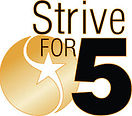top of page

Chapter 32
The Internal Environment of Animals: Organization and Regulation
Learning Objectives:
1.B.1: Organisms share many conserved core processes and features that evolved are widely distributed among organisms today.
1.C.3: Populations of organisms continue to evolve.
2.A.3: Organisms must exchange matter with the environment to grow, reproduce, and maintain organization.
2.B.1: Cell membranes are selectively permeable due to their structure.
2.B.2: Growth and dynamic homeostasis are maintained by the constant movement of molecules across membranes.
2.C.1: Organisms use feedback mechanisms to maintain their internal environments and respond to external environmental changes.
2.C.2: Organisms respond to changes in their external environments.
2.D.1: All biological systems from cells and organisms to populations, communities, and ecosystems are affected by complex biotic and abiotic interactions involving exchange of matter and free energy.
2.D.2: Homeostatic mechanisms reflect both common ancestry and divergence due to adaptation in different environments.
2.D.3: Biological systems are affected by disruptions to their dynamic homeostasis.
2.E.1: Timing and coordination of specific events are necessary for the normal development of an organism, and these events are regulated by a variety of mechanisms.
3.E.2: Animals have nervous systems that detect external and internal signals, transmit and integrate information, and produce responses.
4.A.3: Interactions between external stimuli and regulated gene expression result in specialization of cells, tissues, and organs.
4.B.2: Cooperative interactions within organisms promote efficiency in the use of energy and matter.
Watch video.
Take notes.
Bozeman Science: Response to External Environments
Watch video.
Take notes.
Bozeman Science: Positive and Negative Feedback Loops

Scientific Skills Exercise:
Describing and interpreting quantitative data
How do desert mice maintain
osmotic homeostasis?
Textbook page 679--Complete in Notes.

Test Your Understanding
Textbook page 686-687, #1-7
Complete in Notes.
As you complete test, mark questions with:
a star (I know this),
a checkmark (I might know this),
or a question mark (I don't know, I guessed).
Self-correct.
Write validations/corrections for checkmarks, question marks, and missed stars (oops).

bottom of page


